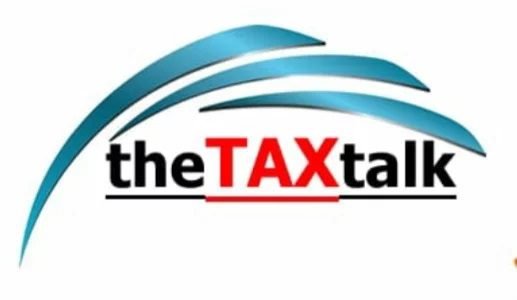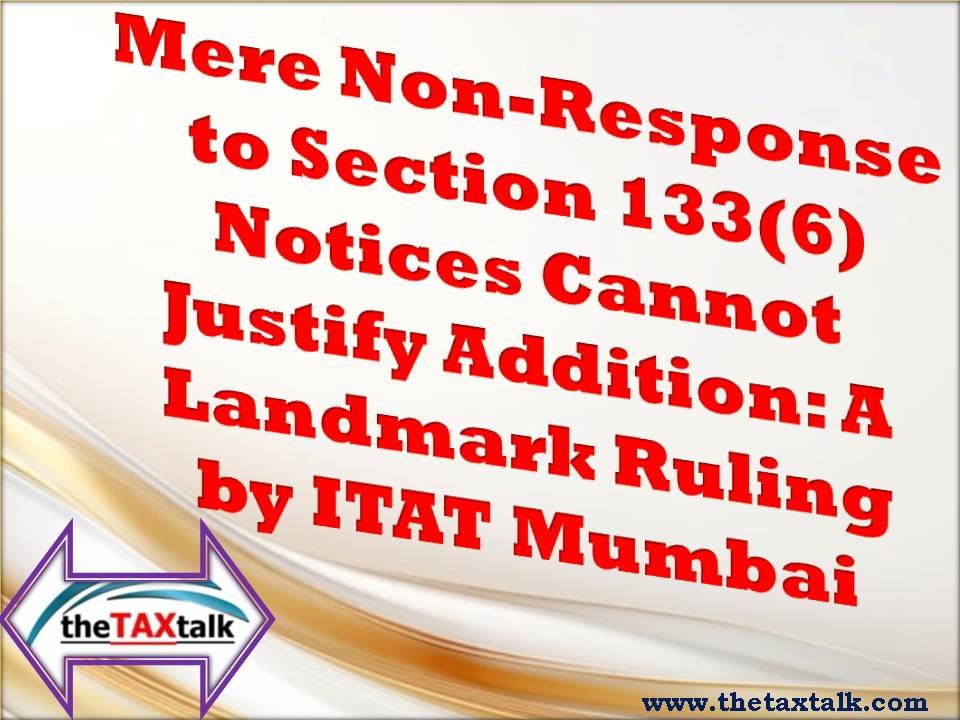![]()
Mere Non-Response to Section 133(6) Notices Cannot Justify Addition: A Landmark Ruling by ITAT Mumbai
Case: ITO vs. M/s. Gold Finger Establishment
Citation: ITA No. 4212/Mum/2015 & CO No. 94/Mum/2017
Assessment Year: 2011-12
Date of Order: 17.05.2018
Coram: Shri Saktijit Dey (JM) & Shri Rajesh Kumar (AM)
In a significant ruling, the Income Tax Appellate Tribunal (ITAT), Mumbai, has laid down that the mere non-response to notices issued under Section 133(6) of the Income-tax Act, 1961, cannot be the sole basis to treat purchases as bogus or make disallowances under Section 69C. The case involved M/s. Gold Finger Establishment, a trading concern, and relates to alleged bogus and inflated purchases worth over ₹1.14 crore.
Background of the Case
The Assessing Officer (AO) had made two key additions in the assessment:
1. ₹1,14,16,135/-– for purchases from six parties who either did not respond to Section 133(6) notices (in four cases) or where notices were returned unserved (in two cases).
2. ₹66,09,022/-– for discrepancies between purchase amounts recorded by the assessee and those confirmed by creditors.
The total turnover of the assessee was ₹17.23 crore with a declared Gross Profit (GP) rate of 3.75%.
Key Observations of the Tribunal
1. Addition Based on Non-Reply to Section 133(6) Is Not Sustainable
The ITAT upheld the Commissioner of Income-tax (Appeals) [CIT(A)]’s view that simply because the suppliers did not reply to notices under Section 133(6), it cannot be assumed that the purchases were bogus. The Tribunal agreed with the CIT(A)’s rationale:
“The appellant was not required to prove the creditworthiness of the parties, but only their identity, which was already established as notices were duly served.”
In support of this, the Tribunal cited several judicial precedents including:
• CIT v. Orissa Corporation (P) Ltd.
• Nikunj Eximp Enterprises (P) Ltd.[2013] (Bombay HC)
• DCIT v. Rohini Builders[2002] (Guj. HC)
2. Violation of Rule 46A? Tribunal Says No
The Revenue argued that CIT(A) violated Rule 46A by accepting confirmation letters at the appellate stage without forwarding them to the AO. However, the ITAT dismissed this objection, observing that:
• The CIT(A) had specifically called for confirmationsfrom the assessee.
• The assessee had already provided these to the AO as well.
• Hence, Rule 46A was not violated.
3. On ₹66.09 Lakh Discrepancy: No Justification for Full Disallowance
Regarding the ₹66.09 lakh difference, the Tribunal found that treating the entire amount as bogus or unexplained expenditure was excessive and not based on evidence. The discrepancy arose due to differences between the books of the assessee and replies received from the creditors.
The Tribunal remarked:
“Even if purchases are considered inflated, disallowing the entire amount is not justified. A GP-based disallowance is more appropriate.”
Hence, it directed the AO to apply a GP rate of 4% on ₹66,09,022/-.
4. Partial Relief: Differentiated Approach for Served and Unserved Notices
Out of the six parties from whom purchases worth ₹1.14 crore were made:
• For four parties(₹53 lakh), where notices were served but not replied to – deletion of addition was upheld.
• For the remaining two parties(₹62 lakh), where notices were not served at all – the Tribunal applied a 5% GP rate and sustained addition of only ₹98,117/-.
Final Verdict
• Addition of ₹53 lakhdeleted in full.
• Addition of ₹09 lakhreplaced with 4% GP addition.
• Addition of ₹62 lakh(from two unserved parties) reduced to 5% GP-based addition.
• Total disallowance sustained: ₹98,117/-
Key Takeaway for Taxpayers & Professionals
This ruling reiterates that non-response to Section 133(6) notices is not conclusive proof of bogus transactions. The onus lies on the AO to carry forward investigations, rather than making additions solely based on third-party non-compliance.
The judgment also clarifies that unless the AO disproves the existence of a transaction with material evidence, purchases routed through banking channels, backed by confirmations, and forming part of regular trading activity should not be disallowed summarily.
The copy of the order is as under:


